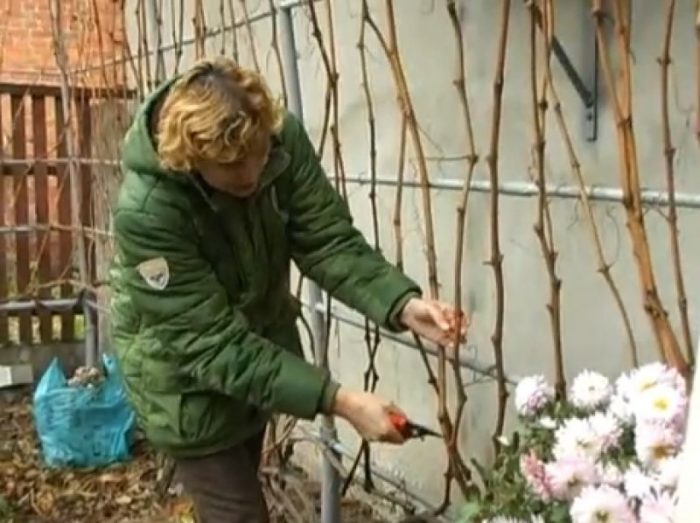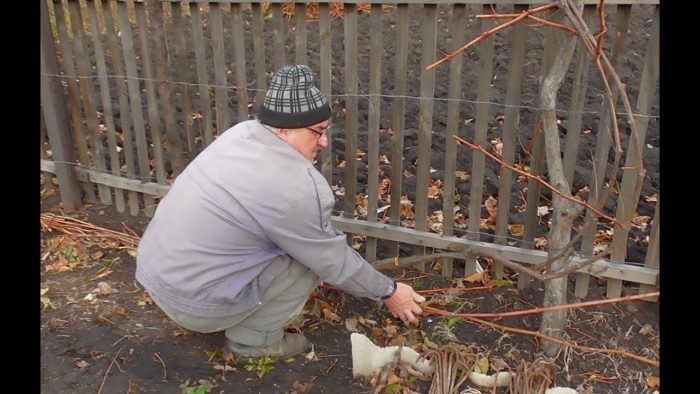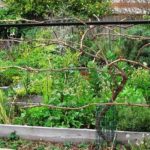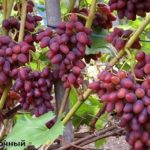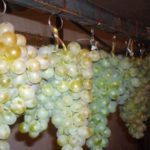Let's talk about virgin (wild) grapes - how to care for them in autumn and winter. Note that an adult perennial does not require special care. This plant has long shoots and a rich crown. Tenacious tendrils firmly grasp the support, due to which the grapes are able to entwine the buildings of the site. Grapes often become a decoration for buildings, which is often used by landscape designers.
Features of girlish grapes in winter
Maiden grapes are grown by owners of summer cottages or rural houses. Curly beautiful shoots abundantly cover buildings and fences, which gives the site a special look. This type of plant is considered an unpretentious crop that takes root well in almost any region of the Russian Federation. There are subspecies of grapes that can survive severe Siberian frosts. The culture develops quite quickly, sometimes reaching a length of 30 meters.
Appearance and characteristic features
This plant has beautiful leaf color. Leaf blades abundantly cover the vines. Depending on the season, the color can range from emerald green to red. The fruits of the plant can be eaten, and birds also feed on them. In addition, the berries of the plant give the site additional charm. At the same time, the blossoming grape buds do not require pollination - they bear fruit on their own.
Resistance of virgin grapes to frost
If enough snow falls during the winter season, then wild grapes are not afraid of frost. If a gardener organizes proper care for a perennial plant, then after winter the plant will retain its qualities. Before sheltering, it is advisable to study the characteristics of a particular variety, taking into account the climate in the region. What’s interesting is that for growing grapes in Siberia, breeders developed special varieties.
Low temperature tolerance
There are grape varieties that are particularly winter hardy. These include:
- The grape is tripointed - it has leaves of various shapes, which consist of 3 lobes. This crop can withstand frosts down to minus 15 degrees Celsius.
- Variety Attached - it was bred for especially tall buildings. The main shoots of the plant reach at least three meters in length. Platinum sheets consist of five or three blades.
- Variety Five-leaf – this crop has five-lobed leaf blades with a complex shape. The color of the leaves changes depending on the season. For example, from late spring to early autumn, the leaves remain green and then turn red.
Wild grapes can be grown almost anywhere. In order for the plant to develop freely and the crown to be lush, it is advisable to follow these recommendations:
- Place a strong support near the bush.
- Use loose and airy soil as soil.
- A young bush requires frequent, abundant watering.
- Place the plant in a lighted area.
Gardeners also do not recommend growing this crop next to fruit-bearing trees.
Timely pruning and fertilization with complex additives will provide the crop with additional frost resistance and resistance to bad weather.
Preparing the plant for wintering
Grapes do not require special preparation for the winter season, but responsible gardeners prefer to carry out a number of simple tasks for additional care. First of all, you need to get rid of damaged and diseased branches and dried leaves. Then you need to do the correct pruning. It is worth covering the plant for the winter when its shoots have not yet become strong.
The need to trim girlish grapes before winter
The grapes are pruned to give them a more decorative appearance. It is also worth considering that when a plant grows excessively, its branches can damage the support. Pruning helps refresh the appearance and rejuvenate the bush.
First of all, dry, broken and diseased vines are removed. Strongly overgrown branches are shortened.To avoid damaging the plant, gardeners use sharp garden shears or pruning shears. Before pruning, it is recommended to disinfect garden tools. Pruning before winter stimulates active growth of the crop for the next season.
Should the plant be covered for the winter?
In central Russia, wild grapes are able to survive the winter even without shelter. Even particularly low temperatures, as a rule, are not capable of critically damaging the plant. But at the same time, gardeners cover young planting material for the winter, since young shoots need time to get stronger. To do this, from the beginning of mid-autumn or a little earlier - the stems of the plant before the age of two are removed from the trellis, laid out on top of the ground, and covered. The following materials are used for shelter:
- Snow - perennials are laid on top of the lattice and covered with a 40-centimeter layer of snow.
- Ruberoid and slate. It is not recommended to use plastic film as cover.
- Earth - in this case, dig a hole, put young shoots in it and sprinkle with a 20-centimeter layer of soil.
- Fallen leaves, spruce branches or sawdust - the bush is placed on a wooden substrate and covered with a 20-centimeter dry layer.
When growing virgin grapes in pots, boxes or on the balcony, the process of covering for the winter will be different. In this case, the plant should be moved indoors for the winter. But if this is not possible, then when the first frost occurs, you should wrap the bush with special insulation.

